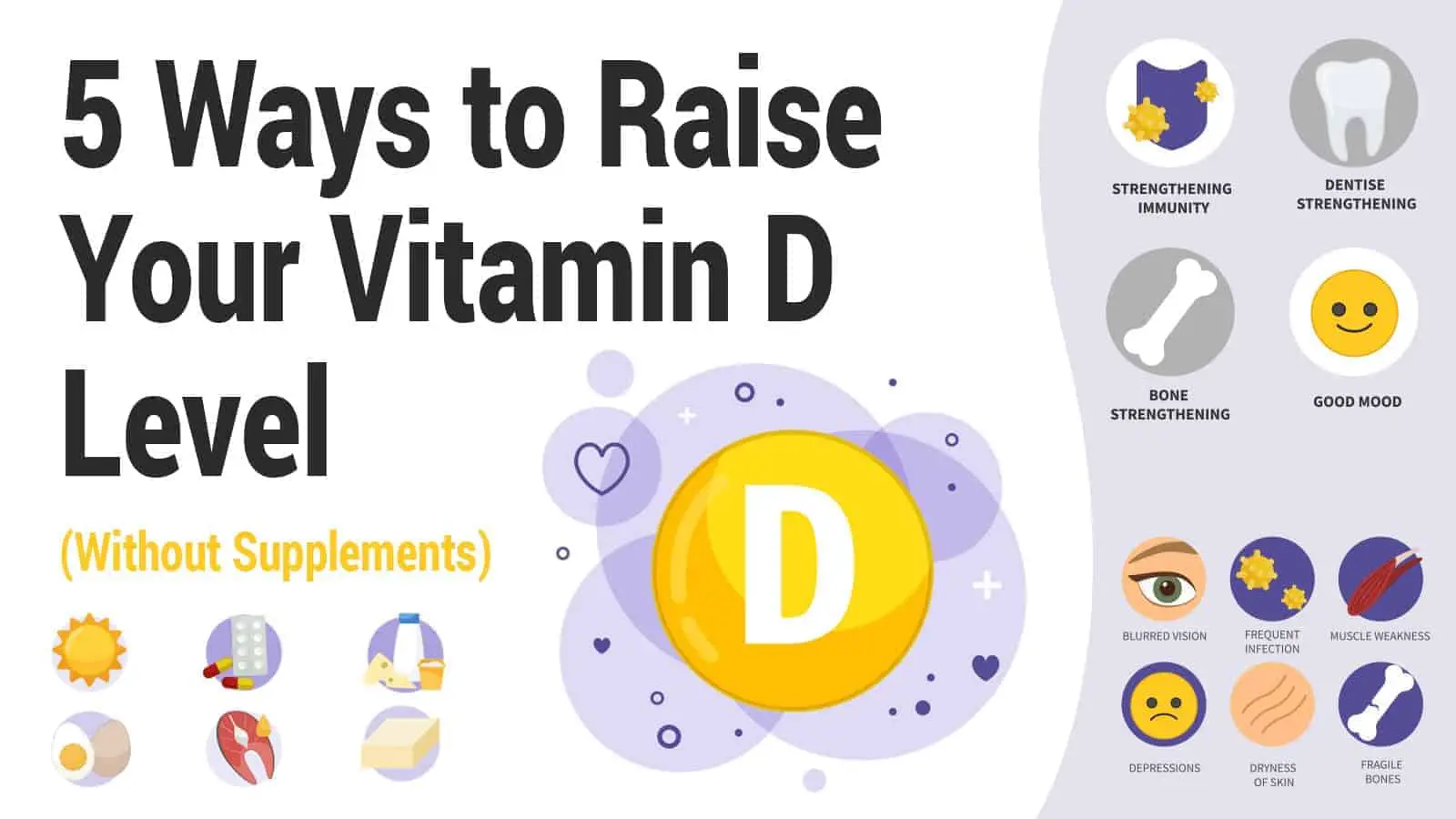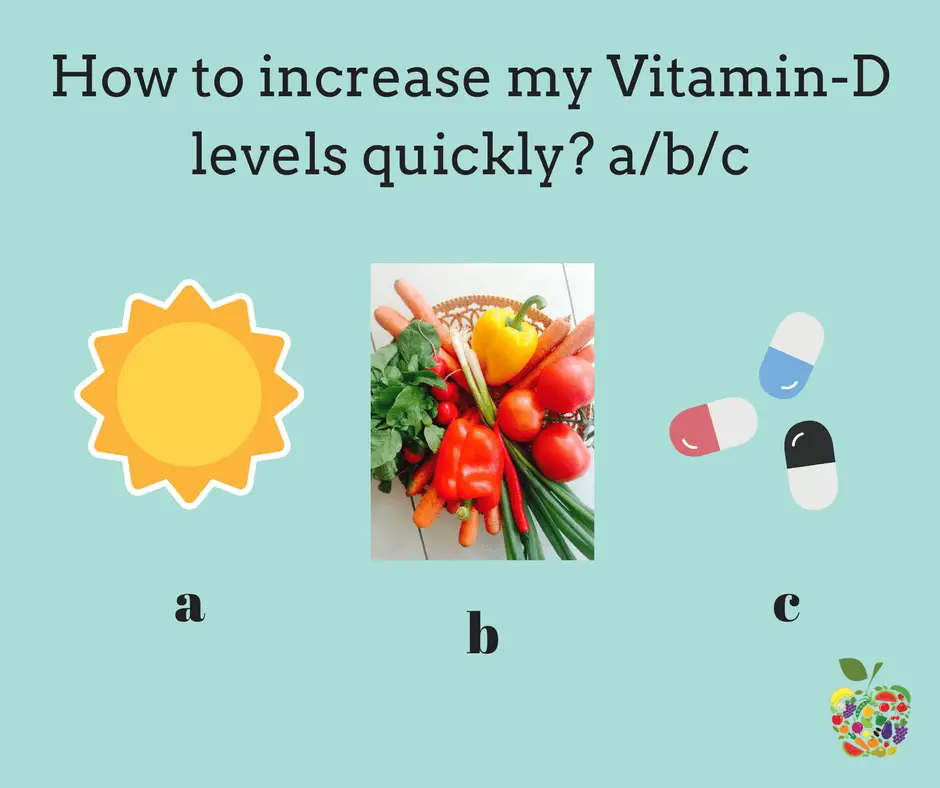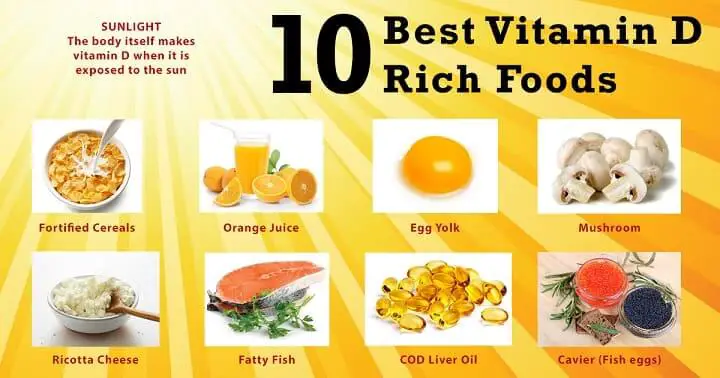Can Too Much Vitamin
Strangely enough, one cannot get too much Vitamin D from the sun but can overdo the supplements causing various problems. Vitamin D toxicity is, thankfully, quite rare but it can lead to hypercalcemia symptoms of which are: nausea, increased thirst and urination, and poor appetite. Fret not, and try to lead a more natural way of life by eating seasonal foods and home-cooked meals, and being active in day-to-day life. These simple practices will keep the body and mind fit.
Vitamin D: Optimal Levels And How To Get There
Evolving recommendations for vitamin D illustrate the need to assess serum biomarkers from an optimal perspective. Evaluation of both optimal vitamin D levels and intake have been gaining attention.
Traditionally, serum 25-hydroxyvitamin D D) levels above 20 ng/mL were accepted as normal. Insufficiency was defined as 12-20 ng/mL , and deficiency was defined as a value lower than 12 ng/mL .
However, over time, research revealed that minimum sufficiency wasnt achieved until levels reached above 30 ng/mL , while levels of 40 ng/mL or greater were associated with a reduction in all-cause mortality.
Corroborating these findings, research during the COVID-19 pandemic revealed that a 25D level of 30 ng/mL or greater was associated with reduced disease severity and mortality. Researchers recommend maintaining a serum 25D level of 55 ng/mL or greater to reduce cancer risk.
How much is too much? Serum 25D does not reflect tissue stores and toxicity is a potential concern, though at what level it may occur is debated. Pharmacokinetics research suggests that while levels of 25D must rise above 300 ng/mL to produce vitamin D toxicity, the more prudent upper limit of 100 ng/mL might be retained to ensure a wide safety margin. Serum calcium levels should also be assessed as 25D levels rise.
Currently, conventional lab normal range is 30100 ng/mL , with an optimal goal of 50-90 ng/mL .
Vitamin D From The Sun
A quick and simple comparison for you: you get 400 units of vitamin D from a glass of fortified milk versus 20,000 units of Vitamin D from 30 min of unprotected sun exposure .
Vitamin D is created by your skin when exposed to the sun. So whats the best way to get vitamin D? Get outside. It only takes 15 to 20 minutes of morning sun . It is also recommended not to shower for 20 to 30 minutes after sunbathing for the skin to produce vitamin D. So, hold off that shower!
Recommended Reading: How To Check My Vitamin D Level
Groups Prone To Vitamin D Deficiency
Various factors can inhibit the bodys ability to produce vitamin D. Three highly susceptible groups are:
- People with darker skinResearch suggests that vitamin D intake is lower among African Americans in North America. Skin pigmentation is a natural sunscreen and darker skin leads to less vitamin D production in skin.
- People 50+As you age, your skins ability to produce vitamin D decreases. Research suggests that hypovitaminosis D can lead to cognitive decline in the elderly. The kidneys ability to convert vitamin D into the body also decreases with age, making an increase in absorption even more necessary.
- Overweight or Obese IndividualsVitamin D is fat soluble, meaning its collected in body fat. Fat deposits in the skin store vitamin D3 and higher fat deposit contents, such as those seen in overweight or obese individuals alter and limit the release of vitamin D3 from the skin to circulation.
Spend Time In Sunlight

Vitamin D is often referred to as the sunshine vitamin because the sun is one of the best sources of this nutrient.
Your skin hosts a type of cholesterol that functions as a precursor to vitamin D. When this compound is exposed to UV-B radiation from the sun, it becomes vitamin D.
In fact, sun-derived vitamin D may circulate for twice as long as vitamin D from food or supplements (
However, the amount of vitamin D your body can make depends on several variables.
You May Like: Does Vitamin K Help With Blood Clotting
Factors That Contribute To Low Vitamin D Levels
Unlike nutrients such as vitamin C and vitamin B12 that are only derived from diet, the body has the ability to produce vitamin D. Because of this many would assume that the body is capable of producing the right amount their body needs. While true in principle, it is not the whole picture. How much vitamin D the body produces is dependent on a host of factors.
Its important to remember that our bodies do not produce Vitamin D in response to low supply. Production is triggered by other factors, including our environment.
Vitamin D production is largely influenced by the amount of direct sunlight a person is exposed to. Depending on lifestyle habits, geographic location, and climate, how much direct sunlight you receive can have a major impact.
Additional contributors to reduced vitamin D include:
- darker skin
- using medications like statins and steroids
The Health Benefits Of Vitamin D
Some of the benefits associated with keeping up your vitamin D levels include:
- Maintaining healthy bones and teeth
- Supporting the immune system
- Sardines
- Eggs
In addition to these sources, some foods are fortified with vitamin D, like milk, yogurt, cereal, and orange juice. Certain mushrooms can also be a good source of vitamin D if they have been exposed to ultraviolet light while growing.
In order to actually benefit from your vitamin D intake, its also important to get enough of the other vitamins and minerals that help your body absorb and utilize vitamin D. These include vitamin A, vitamin K, zinc, boron, and, most importantly, magnesium. Eating beans, nuts, and fish can help you get enough of these essential nutrients.
You May Like: How Does Vitamin D Help The Body
Individuals About To Initiate Treatment With Antihormonal Effects
We suggest obtaining a baseline 25D level in all individuals who are initiating therapy that could impact bone mineralization. This means that premenopausal women undergoing chemotherapy or medical or surgical ovarian ablation and postmenopausal women beginning aromatase-inhibitor therapy should be tested. Estrogen upregulates both the 1–hydroxylase enzyme that converts 25D to 1,252D and increases levels of vitamin D receptor protein., Thus, depletion of estrogen may unmask a subclinical vitamin D deficiency, which may increase the severity of muscle and joint symptoms experienced by women entering menopause or undergoing aromatase-inhibitor therapy. For cancer survivors, 25D levels drawn in late winter or early spring will provide an estimation of trough levels of vitamin D.
Optimal Vitamin D Status
At the present time, 25D levels in the range of 30 to 60 ng/mL are considered optimal, but higher levels up to 100 ng/mL are often seen in individuals with outdoor occupations receiving intense sun exposure without ill effects. Correlative studies of 25D with muscle strength or risk of breast or colon cancer have prompted several investigators to suggest that the optimal 25OHD target for multiple health outcomes is 40 to 50 ng/mL., Garland et al suggest that increasing 25D to a range of 40 to 60 ng/mL from the current US average could reduce risk of breast cancer by 25% and colon cancer by 27%. Intakes of at least 4,000 IU daily from all sources would be needed to maintain 25D levels of 40 to 60 ng/mL. Practically speaking, supplements of 2,000 IU daily plus some sun exposure would probably be required to maintain a 25D level of 40 to 60 ng/mL year round.
Also Check: What Vitamins Are Good To Give You Energy
The Best Source: Sunshine
The fastest way to increase vitamin D levels is to expose your skin to natural sunlight. It’s the vitamin D3 component of vitamin D that your skin produces when combined with sunshine. The Vitamin D Council says that in as little as 15 minutes for a fair-skinned person, the body can produce 10,000 to 25,000 IU of vitamin D. How much time you need in the sun depends on the time of day, season, where you live and skin color. Don’t worry about getting too much vitamin D from sunshine because excesses are stored in your body’s fat for later use.
Vitamin D: Whole Foods Vs Fortified Foods
Fortified foods are meant to help boost vitamin and mineralintake. Theyre designed to add nutrients that dont naturally occur in theproduct. Sometimes iron, fiber, zinc or vitamin A is added. For instance, most milkis fortified with vitamin D and calcium is sometimes added to orange juice.
Since so few foods found in nature are good sources ofvitamin D, fortified foods provide most of the vitamin D found in the Americandiet, explains Taylor.
But she warns that some fortified foods can contain addedingredients that make the product less healthy, like sugar or hydrogenatedfats. Cows milk and most plant alternative milks are typically fortified withvitamin D, but its important to look for products with no added sugar.
Many types of yogurt and cereal are also fortified withvitamin D, but could contain excessive added sugar or saturated fat. Margarineis often fortified as well, but some products contain partially hydrogenatedoils, which should be avoided. Read labels to choose the best product for yourfamily.
Also Check: Where To Buy Vitamin K2
What Is Vitamin D
Although it has “vitamin” in its name, vitamin D is technically a hormone. Unlike many other key nutrients, your body can make vitamin D. When your skin is exposed to the sun for a long enough time, your body can synthesize vitamin D. You can also get it through foods and supplements. Vitamin D deficiency is linked to an increased risk of depression, weaker bones, and fatigue.
What Makes Someone More At Risk

There are a few factors that put people more at risk of vitamin D deficiency. Porter outlines the groups in the UK most likely to be affected:
- Babies born and young children.
- Children and adolescents who spend little time playing outside.
- Pregnant and breastfeeding women.
- People over 65 years .
- People with darker skin tones: people of Asian, African, Afro-Caribbean and Middle Eastern descent.
The relationship between dark skin, northern climates where the sun is weaker like the UK, and low vitamin D levels has been found in many studies. In one recent study of 449, 943 people aged 40-69 years, 53% of Asian and 34.9% of black participants had vitamin D deficiency, compared to 12% among the white participants.
PHE and NICE also emphasise that those with dark skin are more at risk and recommend that those with African, African-Caribbean or south Asian backgrounds continue to take vitamin D supplements over spring and summer
Porter goes on to list the external factors that can contribute to lower vitamin D levels. Anyone could be at risk if:
- They are housebound, spend little time outside or cover up for cultural or religious reasons.
- They live in the north of the UK where sunlight is less strong.
- They spend very little time outside during the summer: the housebound, shop or office workers, night shift workers.
- They live somewhere where the air is quite polluted.
How to boost your vitamin D levels this winter
- 20min
Recommended Reading: What Is The Recommended Daily Dose For Vitamin C
Unconventional Ways To Optimize Your Vitamin D Levels From The Sun
While the recommended daily allowance for vitamin D is around 600 IU daily, I recommend more. Myself and many other experts agree that an ideal range for vitamin D in healthy individuals is between 1,000 and 2,000 IU daily. This is the equivalent of about 20 to 30 minutes of sun exposure three times a week if you have fair skin.
Reverses And Prevents Anemia
This study has found that chronically low levels in vitamin D can cause anemia. This is interesting as we mostly think of anemia as a result of low iron and/or vitamin B12. We now know vitamin D can also play a role. Symptoms of anemia include deep fatigue, rapid heartbeat, difficulty concentrating, dizziness, pale skin, leg cramps, and insomnia.
Also Check: What Is The Best Vitamin To Speed Up Metabolism
Best Ways To Increase Your Vitamin D Quickly
Video Summary
Vitamin D is a steroid hormone produced from cholesterol when your skin is exposed to sunlight.
So if youre not eating some cholesterol in your diet and/or youre on a cholesterol-lowering statin drug you are most likely deficient in Vitamin D.
Unfortunately, its estimated that at least 50% of the US population is deficient in Vitamin D. And whats worse, closer to 90% has sub-optimal levels.
The Next Step For Getting Relief
The whole process of balancing your calcium intake, correctly interpreting all the blood tests and adjusting your vitamin D dosage, not to mention the need to follow all the safety guidelines, take the essential co-factors, and knowing how to deal with the sudden flair-ups can be overwhelming.
I and my wife have an idea of how that feels, as weve gone through that same process ourselves.
For this reason, if you are feeling lost be sure to check our book on how not to die with true high-dose vitamin D therapy where youll find a step-by-step guide teaching everything you need to know on safe high-dose vitamin D and vitamin K2 supplementation.
Recommended Reading: Can Vitamin C And Zinc Be Taken Together
Adults And The Elderly
In adults, vitamin D deficiency can cause fatigue and general aches and pains of various degrees of severity in the ribs, lower back, hips, pelvis, thighs, shin bones and feet. Hairline fractures – a small crack or bruise on the bone – are not uncommon.
In more severe cases, poor vitamin D levels can result in osteomalacia, a condition in which bones become soft, weak and prone to breakage. Without sufficient vitamin D, the minerals that are needed to make bones strong are unable to enter, resulting in weak muscles and bone pain.
Osteoporosis is a progressive condition that effects the elderly population the worst. Age UK warns of the dangers of poor vitamin D levels in the over-50s. It is thought that more than 1 in 3 women and 1 in 5 men in this age group will break a bone due to osteoporosis. PHE and NICE also caution of the increased risk of falls in older people, which can result in serious injury.
How To Get More Vitamin D
Making sure youre getting enough vitamin D is an important part of keeping your bones healthy. Start by talking to your doctor about having your vitamin D levels checked. If youre deficient in vitamin D, your doctor will probably recommend ways to boost your vitamin D intake, which may include these strategies:
Read Also: How Much Vitamin C For A Dog With Cancer
Try Supplements With Your Doctors Supervision
The easiest and most efficient way to increase vitamin D levels may be to take supplements. Considering the skin cancer risks of using sunlight to boost vitamin D and the difficulty of getting enough vitamin D in your diet, supplements are often the primary recommendation for people who are deficient in vitamin D.
Vitamin D can be found in many multivitamin supplements, but it can also be taken on its own. There are two types of vitamin D: D2 and D3. Both types are available in supplement form, and their effect on overall vitamin D levels is roughly equivalent. However, some research has indicated that D3 may lead to a greater and more sustained elevation of vitamin D in the blood than D2.
Various studies have estimated that it takes up to 24 hours for vitamin D3 supplements to raise vitamin D levels in the bloodstream. However, vitamin D then needs to be converted to its active form . After taking a high dose of vitamin D3, a study showed it can take approximately seven days for it to convert and cause a peak in hydroxyvitamin D levels, the active form tested by your doctor.
The critical takeaway is that vitamin D levels increase gradually. If a test reveals that your vitamin D levels are low, you’ll need to consult with a doctor to determine how much vitamin D you need to take to raise your levels and keep them up.
While there is much debate about how much vitamin D people need, the Office of Dietary Supplements says:
Dont Let A Vitamin D Deficiency Keep You Down

Its always a good thing to get key vitamins and nutrients the natural way, but when youve been diagnosed with a vitamin D deficiency, its a good indicator that your lifestyle just isnt bringing you into contact with the foods and sunlight you need to keep your vitamin D levels up without help.
The truth is that many of us just dont find it easy to spend time outside, while the sun is out. Obligations to our jobs, families, education, and other responsibilities of modern life dont leave us with many opportunities to step out and let our skin convert UV rays into vitamin D. Climate, skin sensitivity, and other factors can also work against us here.
Diet can help, but with seafood and eggs being the best natural food sources for vitamin D, vegetarians and vegans are at a huge disadvantage. Even if you do consume meat and fish, youd have to eat a heck of a lot of salmon and tuna every day to eat your way out of a vitamin D deficiency.
If you really need to increase vitamin D levels fast, a high-quality, natural supplement is likely to be your best bet. Youll know exactly how much youre getting and can get your levels back up quickly while working on the lifestyle habits that will keep you from falling into a deficiency again.
You May Like: Is Vitamin C Good For Dogs